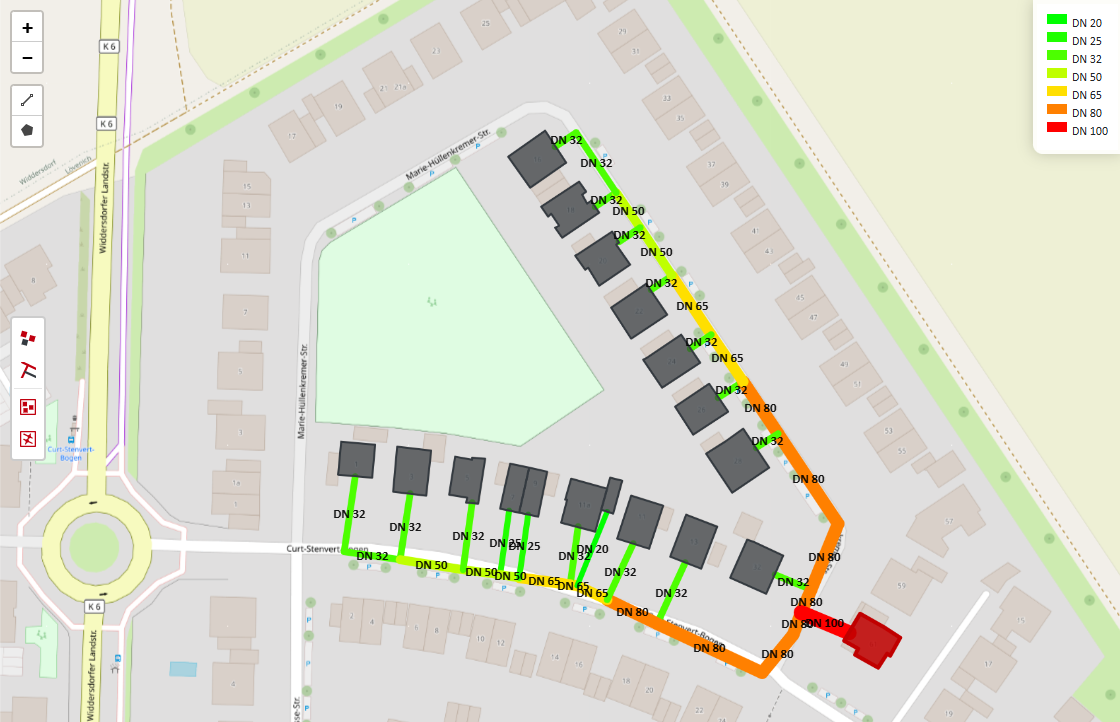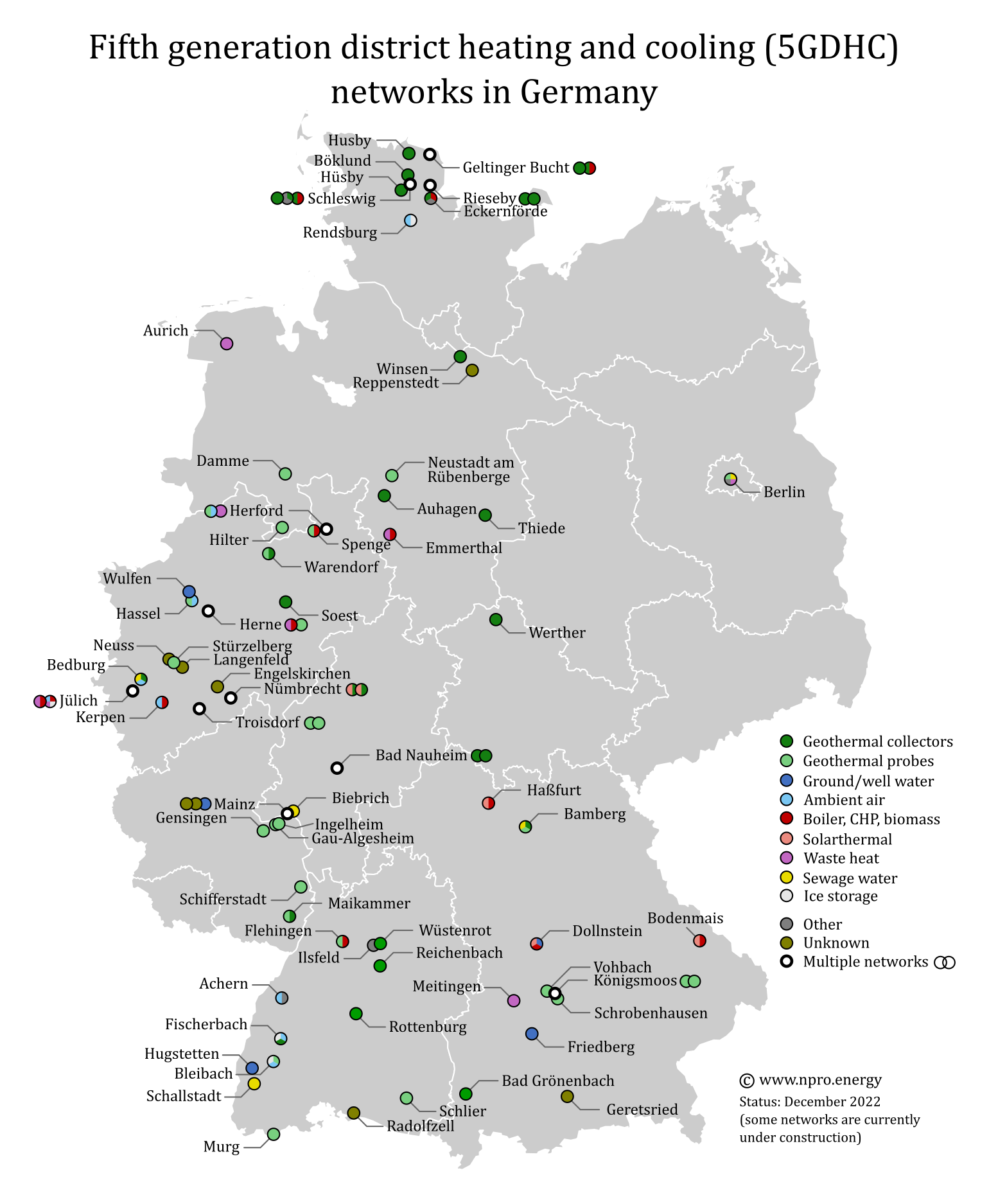Fifth generation district heating and cooling (5GDHC networks)
Fifth generation district heating and cooling (5GDHC) networks is a new concept for an emission-free heat supply of districts. 5GDHC networks enable the integration of ambient heat sources and are therefore considered an important technology for decarbonizing the heat supply. They are also called anergy networks.
What are 5GDHC networks?
5GDHC networks describe district heating networks with operating temperatures at ambient temperature (approx. 5-35 °C). In 5GDHC networks, heat pumps are installed in buildings, which raise the temperature level of the heat from the network to the supply temperature in the heating system of the building.
What 5GDHC networks exist?
In Europe an estimated number of more than 100 districts with a 5GDHC network exist. On this overview page many districts are listed. If you know of an additional district, not listed on our website yet, you can register it using our survey on 5GDHC districts.
Advantages of 5GDHC grids
A decisive advantage of 5GDHC networks is that they can provide both heating and cooling with only one thermal network (2 pipes). In this case, there is a balancing of heating and cooling demands between buildings: waste heat from cooling processes can be used at the evaporator of decentral heat pumps of other buildings, which reduces the cooling and heating load to be generated at the energy hub. 5GDHC networks can exploit low-temperature and ambient heat sources that cannot be used by conventional district heating networks. These include, for example, waste heat from sewage water, river or lake water, or near-surface geothermal energy. By using decentral heat pumps, the electricity and heat sectors are closely coupled in 5GDHC networks (sector coupling). If heat storage are installed in the system, districts with 5GDHC networks can provide flexibility for the electricity grid. For more advantages, see the detailed list of advantages of 5GDHC networks.
Disadvantages of 5GDHC grids
One disadvantage is that although numerous 5GDHC networks have already been realized, there is still a lack of technical experience as well as suitable calculation methods and tools for the design of 5GDHC networks. Furthermore, compared to conventional district heating networks with a high temperature difference between supply and return, the volume flows in 5GDHC networks are larger, which requires larger pipe diameters. This disadvantage is partly compensated by the fact that often less expensive plastic pipes can be used. Another disadvantage is that the system control is more complex than for conventional district heating networks. Detailed monitoring of the system can help to ensure efficient operation. For more disadvantages, see the detailed list of disadvantages of 5GDHC networks.
Planning and dimensioning of 5GDHC (anergy) networks
When planning 5GDHC networks, some technical aspects have to be considered in order to achieve a high efficiency of the district energy system and to ensure a profitable operation (see also What does 5GDHC cost?). One of the most important decisions concerns the choice of a suitable heat source. An additional important aspect in achieving economic efficiency are subsidy programs such as the German BEW (Bundesförderung für effiziente Wärmenetze - Federal subsidy for efficient heating networks). On numerous subpages you find detailed information about dimensioning, planning and simulation of 5GDHC networks, for example on network and pipe dimensioning or heat losses and gains in 5GDHC networks. Especially for the estimation of heat losses and heat gains in uninsulated networks, the local ground temperatures also play a relevant role. 5GDHC networks are most often planned for new construction neighborhoods, but 5GDHC networks can also become a key technology for the retrofit/renovation of existing districts.

Other terms for 5GDHC networks
5GDHC networks are known by various names: Especially in Switzerland, these systems are called anergy networks. In Germany, the terms cold district heating or low-ex networks are also in common use. Since 5GDHC networks provide not only heat but also cold, and thus a bidirectional energy flow takes place between the building and the network, they are also referred to as bidirectional (low-temperature) district heating networks.

Sources
This might also interest you
nPro software
Plan your energy system with nPro!

 English
English
 Deutsch
Deutsch


